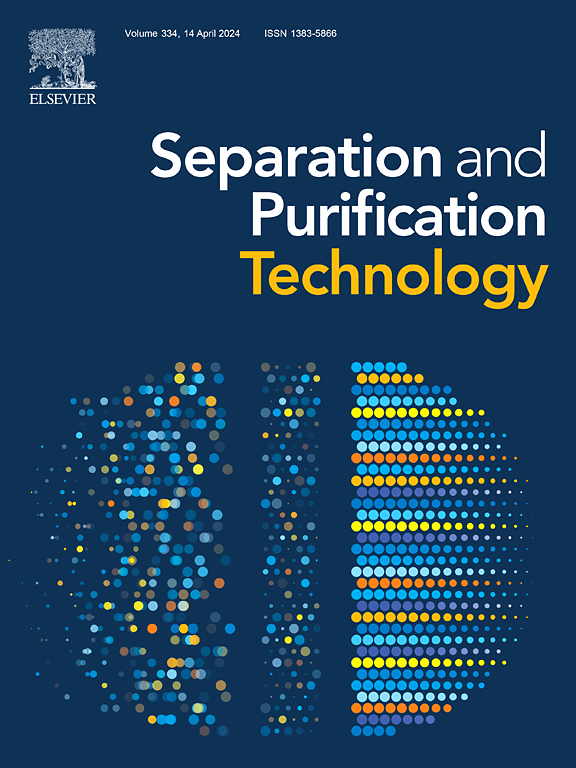Effect of thermal pre-treatment of spent lithium-ion batteries on the selective recovery of graphite anode by flotation
IF 8.1
1区 工程技术
Q1 ENGINEERING, CHEMICAL
引用次数: 0
Abstract
The increased use of lithium-ion batteries (LiBs) in electric vehicles (EVs) and other applications due to global efforts to reduce carbon emissions has led to an increase in end-of-life battery production. This has created a demand for efficient recycling methods to control waste and conserve resources. This study investigated the effect of thermal pre-treatment of spent LiBs materials on the liberation of anodic and cathodic materials from the aluminium and copper current collectors and the subsequent graphite recovery by flotation. The samples were pre-treated using a rotating kiln and microwave furnace at temperatures of 200 °C, 400 °C, and 600 °C, with an additional sample containing 10 wt% CaO treated at 400 °C. The results indicated that higher temperatures resulted in the breakdown of the binder, leading to graphite liberation. Specifically, at 600 °C, the anode and cathode materials exhibited significant separation from the Cu and Al current collectors with an almost similar liberation efficiency for both pre-treatment methods. Furthermore, adding 10 wt% CaO to the samples treated at 400 °C significantly lowered the flotation of the cathode materials and improved the flotation selectivity of graphite. The findings indicate that combined thermal pre-treatment with flotation can improve the recycling process, providing a more scalable and environmentally friendly approach to managing the increasing volume of spent LiBs.
废锂离子电池热预处理对浮选选择性回收石墨阳极的影响
由于全球努力减少碳排放,锂离子电池(lib)在电动汽车(ev)和其他应用中的使用量增加,导致报废电池产量增加。这就产生了对有效回收方法的需求,以控制废物和节约资源。本研究考察了废锂材料的热预处理对铝和铜集热器中阳极和阴极材料的释放以及随后浮选回收石墨的影响。样品在200 °C、400 °C和600 °C的温度下使用旋转窑和微波炉进行预处理,另外一个含有10 wt% CaO的样品在400 °C下处理。结果表明,较高的温度会导致粘结剂的破坏,导致石墨的释放。具体来说,在600 °C时,阳极和阴极材料与Cu和Al集流器有明显的分离,两种预处理方法的分离效率几乎相似。此外,在400 °C处理的样品中添加10 wt%的CaO可显著降低正极材料的浮选率,提高石墨的浮选选择性。研究结果表明,热预处理与浮选相结合可以改善回收过程,为管理日益增加的废锂量提供了一种更具可扩展性和环保性的方法。
本文章由计算机程序翻译,如有差异,请以英文原文为准。
求助全文
约1分钟内获得全文
求助全文
来源期刊

Separation and Purification Technology
工程技术-工程:化工
CiteScore
14.00
自引率
12.80%
发文量
2347
审稿时长
43 days
期刊介绍:
Separation and Purification Technology is a premier journal committed to sharing innovative methods for separation and purification in chemical and environmental engineering, encompassing both homogeneous solutions and heterogeneous mixtures. Our scope includes the separation and/or purification of liquids, vapors, and gases, as well as carbon capture and separation techniques. However, it's important to note that methods solely intended for analytical purposes are not within the scope of the journal. Additionally, disciplines such as soil science, polymer science, and metallurgy fall outside the purview of Separation and Purification Technology. Join us in advancing the field of separation and purification methods for sustainable solutions in chemical and environmental engineering.
 求助内容:
求助内容: 应助结果提醒方式:
应助结果提醒方式:


